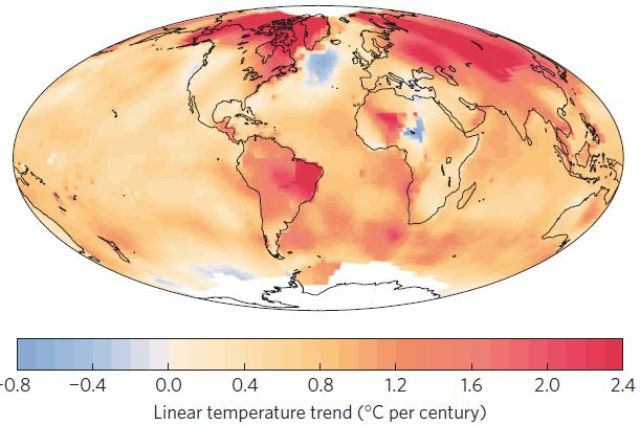
While the whole globe — from polar regions to the equator — has experienced record-breaking high temperatures, a small part of the Earth has experienced the opposite. Scientists say both are indications of the dangerous affects of climate change.
In September, the US National Oceanic and Atmospheric Administration (NOAA) announced that the first eight months of 2015 were the hottest ever recorded in the 135 years since records have been kept.
Meanwhile, last northern winter was the coldest ever recorded for an area of the North Atlantic between Newfoundland and Ireland. A much larger area south of Greenland, while not absolutely the coldest on record, is also unusually cold.
Climate models have predicted a cooling in exactly this area when the Gulf Stream System weakens.
Since the 1980s, scientists have been concerned that global warming could cause the slowing of the planet’s most important ocean circulation system, the global thermohaline circulation known as the Atlantic Meridional Overturning Circulation (AMOC), of which the Gulf Stream is part.
Now, the evidence is mounting that the long-feared circulation decline is already underway.
The AMOC is why Europe has such a mild climate despite being so far north. It is driven by differences in the temperature and salinity of the ocean. Cold salty water in the North Atlantic sinks because it is denser and warmer water from the south moves northward to take its place, bringing heat with it.
But a large injection of cold, fresh water could prevent the sinking that would otherwise occur, weakening the circulation.
An article by Stefan Rahmstorf and colleagues, in Nature Climate Change on AMOC intensity over the past 1100 years, showed that it does not fluctuate naturally and the weakness of the flow after 1975 is unique in more than 1000 years.
This suggests that the weakness of the flow is the result of global warming, specifically the melting of the Greenland ice shelf, which is now losing more than 1 billion tonnes of ice each year. This was the source of the cold, fresh water that is now causing the AMOC to decline.
Rahmstorf said: “The fact that a record-hot planet Earth coincides with a record-cold northern Atlantic is quite stunning. There is strong evidence — not just from our study — that this is a consequence of the long-term decline of the Gulf Stream System, that is, the Atlantic ocean is overturning the circulation of AMOC, in response to global warming.”
If the climate relationships identified by the researchers hold true, growing melt rates in Greenland “might lead to further weakening of the AMOC within a decade or two, and possibly even more permanent shutdown” of key components of it, the scientists warn.
Michael Mann, one of the authors, said Greenland’s ice is melting faster than anticipated, which could explain why the AMOC appears to be slowing “decades ahead of schedule”.
The precise consequences of an ongoing AMOC slowdown are hard to predict. However, Mann has warned that it could reduce global food security by withholding deep-sea nutrients from fisheries and food chains that flourish in shallower Atlantic Ocean depths.
Without the AMOC to carry heat away from the tropics and redistribute it, Mann said Northern Hemisphere winters could become harsher, although not to the extent depicted in the Hollywood film The Day After Tomorrow. He also said hurricanes and other storms could become more common, providing the heat with an alternative pathway along which it can travel.
“If you shut down this mode of ocean circulation, you’re denying the climate system one of its modes of heat transport,” Mann said. “If you deny it one mode of transport, it’s often the case that you will see other modes of transport increase.”
If the circulation weakens too much it could completely break down. The latest Intercontinental Panel on Climate Change (IPCC) report estimates a probability of up to 10% that this could happen as early as this century.
However, this assessment is based on models that may underestimate the risk. Many researchers assess the risk higher than the IPCC. Sixteen experts interviewed for a survey estimated that at moderate global warming — 2–4°C — a probability of a “tipping” or major reorganisation of the flow at between 5–40%. With strong global warming — 4–8°C — this probability was estimated at between 20 and 65%.
Mann said: “Our results could suggest that we’re closer to that point of extreme sensitivity in the AMOC than state-of-the-art climate-model simulations suggest. It could be another example, as if we needed one, where climate projections may be, if anything, erring on the conservative side.”
Rahmstorf said: “There’s still a lot we still don't understand about how the AMOC works. The slowdown we see in the data is not what you see in the climate models. If climate models have underestimated the decline, we might be closer to that threshold [where abrupt changes happen] than we thought.”
Like the article? Subscribe to Green Left now! You can also like us on Facebook and follow us on Twitter.